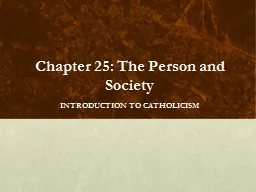PPT-Chapter 12 Section 2 Reconstructing Society
Author : pasty-toler | Published Date : 2018-09-24
Conditions in the postwar south Under congressional reconstruction state constitutional conventions met and elected new mainly republican governments 1868 Alabama
Presentation Embed Code
Download Presentation
Download Presentation The PPT/PDF document "Chapter 12 Section 2 Reconstructing Soci..." is the property of its rightful owner. Permission is granted to download and print the materials on this website for personal, non-commercial use only, and to display it on your personal computer provided you do not modify the materials and that you retain all copyright notices contained in the materials. By downloading content from our website, you accept the terms of this agreement.
Chapter 12 Section 2 Reconstructing Society: Transcript
Download Rules Of Document
"Chapter 12 Section 2 Reconstructing Society"The content belongs to its owner. You may download and print it for personal use, without modification, and keep all copyright notices. By downloading, you agree to these terms.
Related Documents














